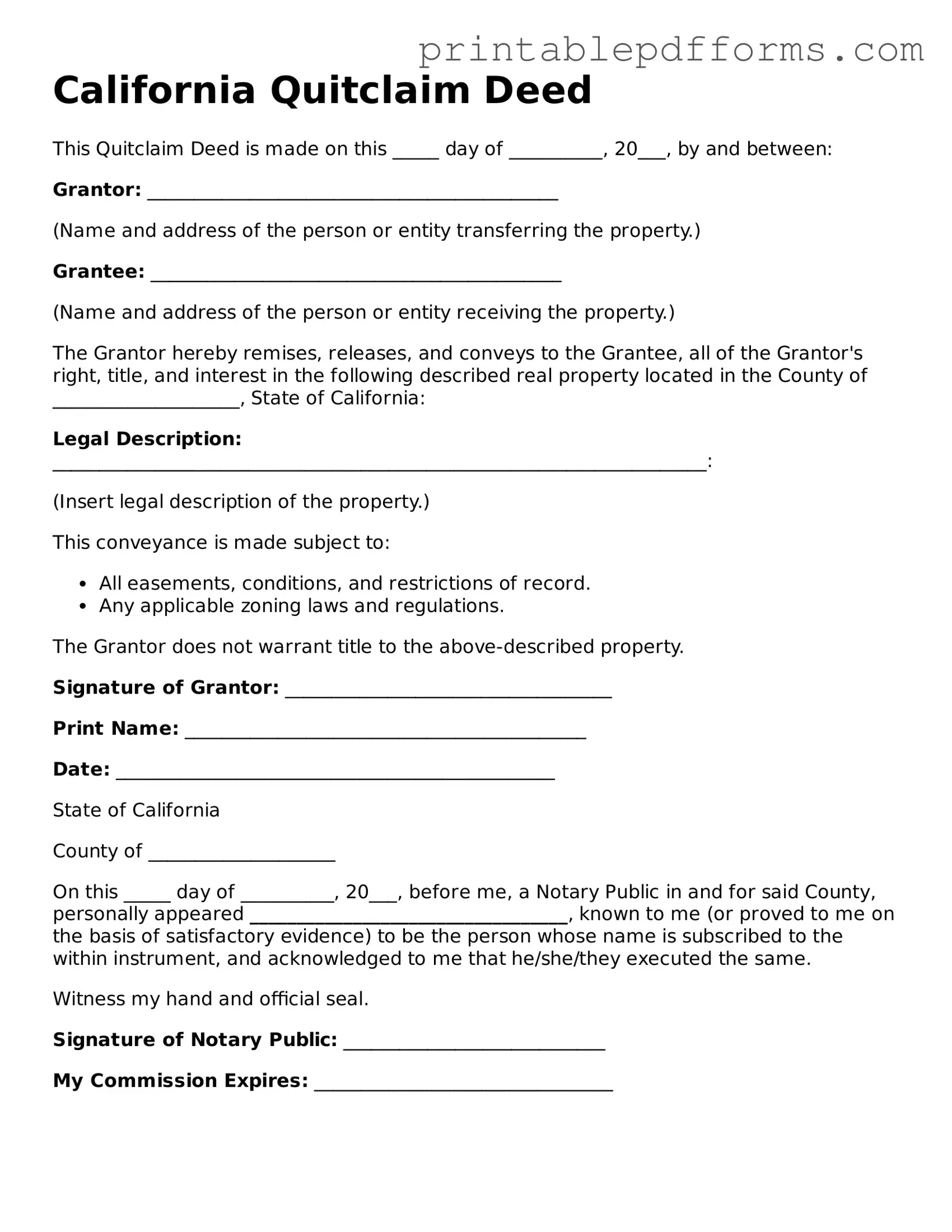California Quitclaim Deed
This Quitclaim Deed is made on this _____ day of __________, 20___, by and between:
Grantor: ____________________________________________
(Name and address of the person or entity transferring the property.)
Grantee: ____________________________________________
(Name and address of the person or entity receiving the property.)
The Grantor hereby remises, releases, and conveys to the Grantee, all of the Grantor's right, title, and interest in the following described real property located in the County of ____________________, State of California:
Legal Description: ______________________________________________________________________:
(Insert legal description of the property.)
This conveyance is made subject to:
- All easements, conditions, and restrictions of record.
- Any applicable zoning laws and regulations.
The Grantor does not warrant title to the above-described property.
Signature of Grantor: ___________________________________
Print Name: ___________________________________________
Date: _______________________________________________
State of California
County of ____________________
On this _____ day of __________, 20___, before me, a Notary Public in and for said County, personally appeared __________________________________, known to me (or proved to me on the basis of satisfactory evidence) to be the person whose name is subscribed to the within instrument, and acknowledged to me that he/she/they executed the same.
Witness my hand and official seal.
Signature of Notary Public: ____________________________
My Commission Expires: ________________________________
